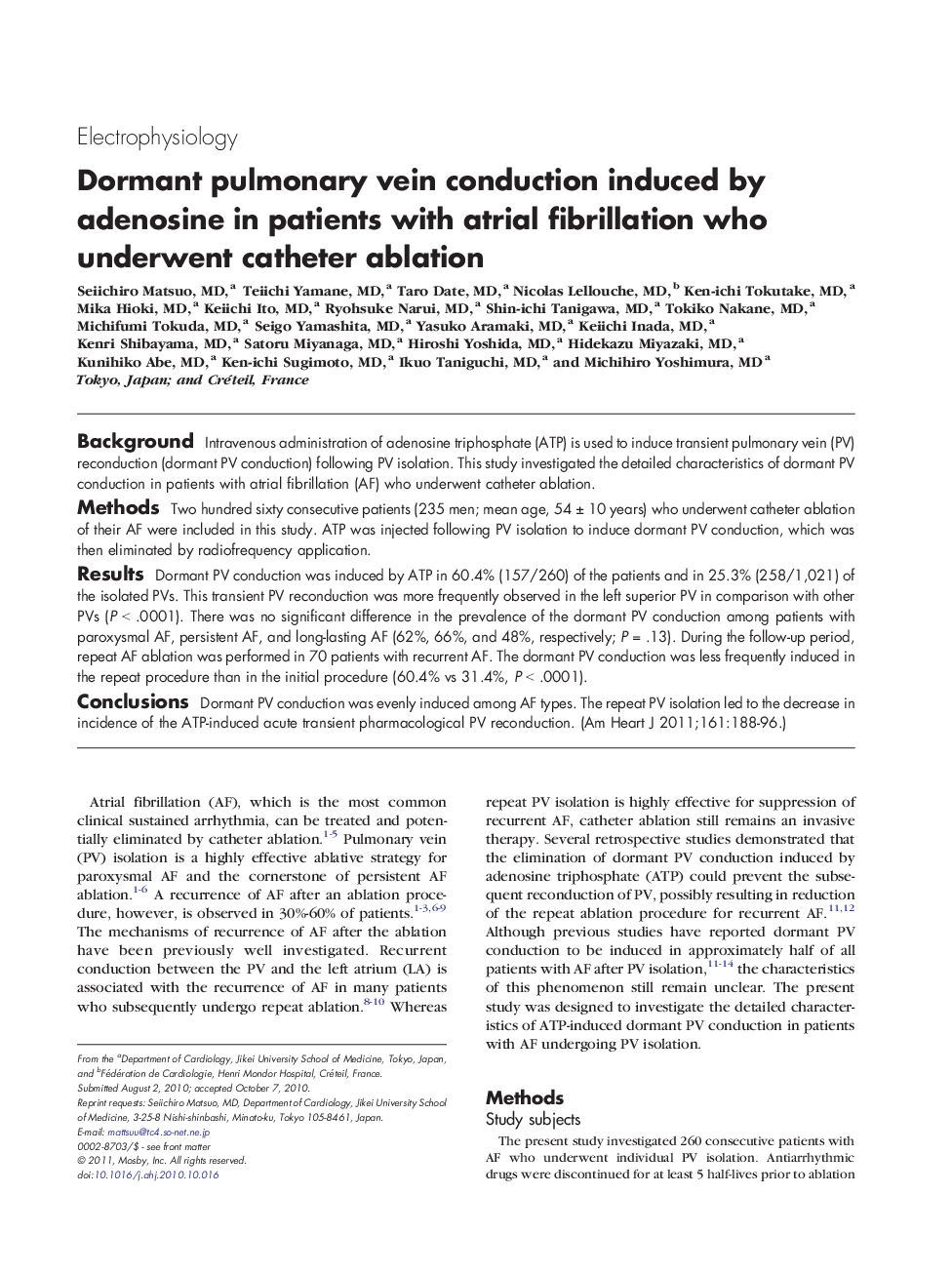| Article ID | Journal | Published Year | Pages | File Type |
|---|---|---|---|---|
| 2849604 | American Heart Journal | 2011 | 9 Pages |
BackgroundIntravenous administration of adenosine triphosphate (ATP) is used to induce transient pulmonary vein (PV) reconduction (dormant PV conduction) following PV isolation. This study investigated the detailed characteristics of dormant PV conduction in patients with atrial fibrillation (AF) who underwent catheter ablation.MethodsTwo hundred sixty consecutive patients (235 men; mean age, 54 ± 10 years) who underwent catheter ablation of their AF were included in this study. ATP was injected following PV isolation to induce dormant PV conduction, which was then eliminated by radiofrequency application.ResultsDormant PV conduction was induced by ATP in 60.4% (157/260) of the patients and in 25.3% (258/1,021) of the isolated PVs. This transient PV reconduction was more frequently observed in the left superior PV in comparison with other PVs (P < .0001). There was no significant difference in the prevalence of the dormant PV conduction among patients with paroxysmal AF, persistent AF, and long-lasting AF (62%, 66%, and 48%, respectively; P = .13). During the follow-up period, repeat AF ablation was performed in 70 patients with recurrent AF. The dormant PV conduction was less frequently induced in the repeat procedure than in the initial procedure (60.4% vs 31.4%, P < .0001).ConclusionsDormant PV conduction was evenly induced among AF types. The repeat PV isolation led to the decrease in incidence of the ATP-induced acute transient pharmacological PV reconduction.
